1.-Favolaschia calocera (Orange Pore Fungus) photo by Fungi Costa Rica
This mushroom was first observed in Madagascar but it has recently spread around the world. Even though it’s a beautiful mushroom, it’s considered an invasive species and scientists are afraid it might be displacing native fungi species.
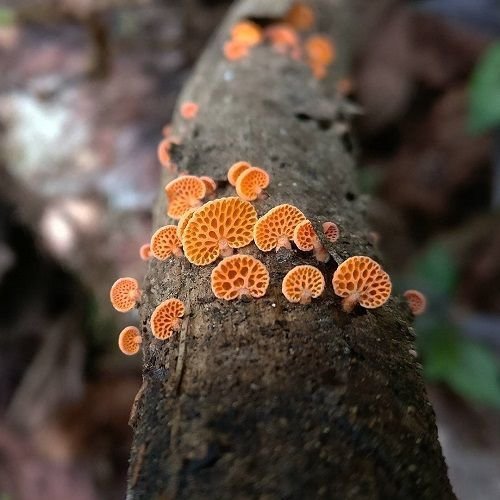
2.-Geastrum minimum (Tiny Earthstar fungus) photo by Enrique lozano
At maturity, the outer layer of this fungus split into segments which gives it a star-like appearance, thus its popular name "Earthstar fungus".
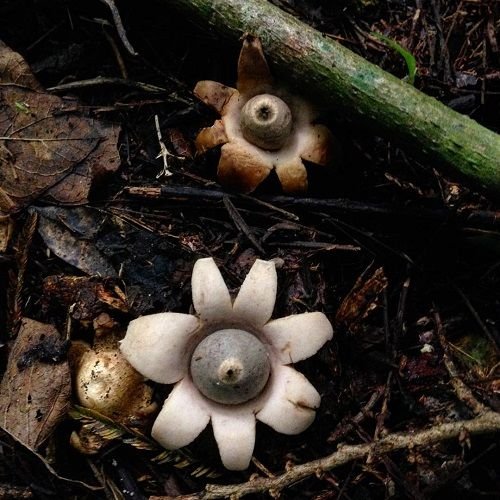.jpg)
3.-Clathrus archeri (Octopus Stinkhorn or Devil's Fingers) photo by Andrea Grover
This fungus is indigenous to Australia and New Zealand but it has also been found in Europe, North America and Asia. It’s believed to have been introduced accidentally through wool imported from Oceania or by the Australian soldiers that came to Europe during World War I. This weird-looking mushroom starts as an egg from which four to seven elongated tentacle-like appendixes erupt giving it the appearance of an octopus.
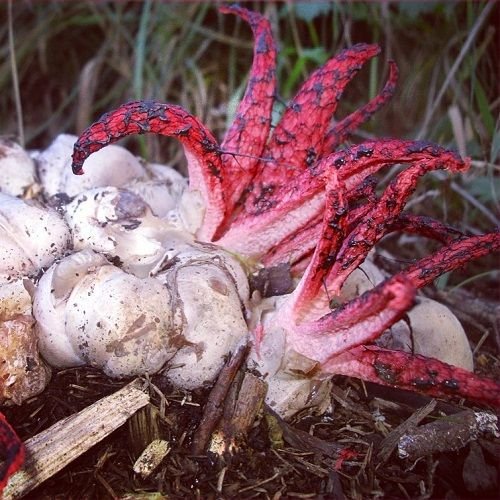%20by%20%40gentleridevan.jpg(1).jpg)
4.-Hymenoscyphus fructigenus (Acorn Cup Fungi) photo by Toronto Mushroom Guerrilla
This tiny cup fungi only grows on beech nuts, hickory shells, and acorns. Picky, picky.
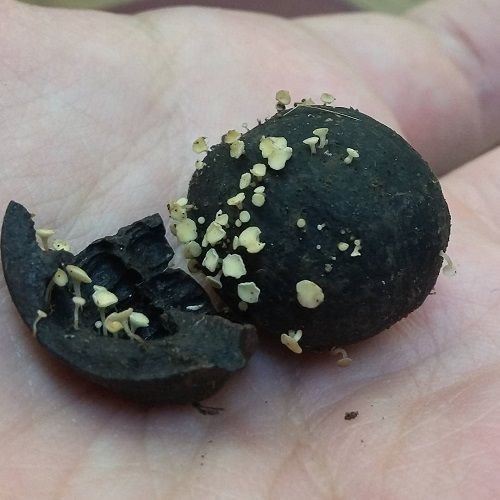%20by%20%40mushroomguerrilla.jpg(1).jpg)
5.-Gyromitra esculenta (False morel) photo by Mackenzie McCoy
This fungus is widely distributed across Europe and North America. Although it’s considered a choice edible in eastern Europe, it contains a toxic and carcinogenic compound called Gyromitrin, which is metabolized in the body to monomethylhydrazine (rocket fuel).
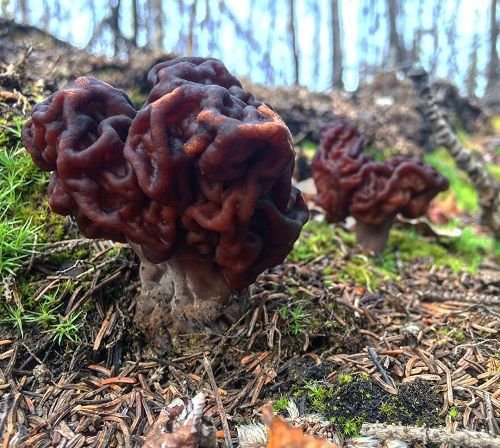%20by%20%40kenzieee_hope.jpg(1).jpg)
6.-Oudemansiella mucida (Porcelain Fungus) photo by WomdyBimbler
This European fungi is not edible but has been found to produce a powerful fungicide known as Strobilurins which have found use in the agricultural business to protect crops from mildews and other microfungi.
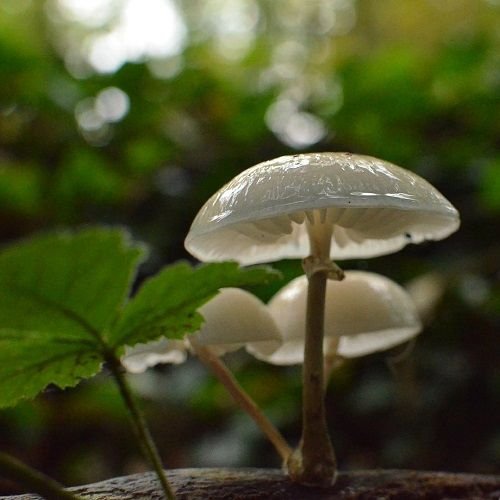.jpg)
7.-Phallus indusiatus (Bamboo Fungus or Veiled Lady) photo by Tim Dickson
This edible mushroom (yes, it’s edible but it also has a fetid smell when mature) is considered a delicacy in eastern Asia and according to a study from 2001, it supposedly can cause spontaneous female orgasms when smelled (don’t get your hopes up, that study hasn’t been replicated and it involved a really small sample to consider its results reliable).
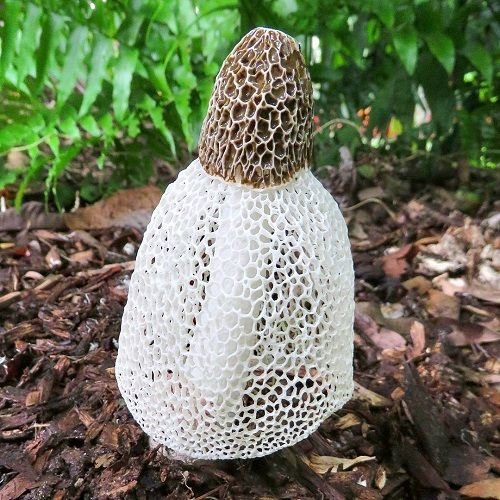%20by%20%40dickson.tim.jpg(1).jpg)
8.-Hydnellum peckii (Bleeding tooth fungus) photo by Andrew Lane Gibson
This mushroom is found in North America, Europe, Iran, and Korea. Young fruiting bodies of this fungi can “bleed” a bright red fluid that contains a pigment with anticoagulant properties similar to heparin. Due to its unusual appearance this mushroom has earned several descriptive common names, such as strawberries and cream, the bleeding Hydnellum, bleeding tooth fungus, red-juice tooth, and the Devil’s tooth.
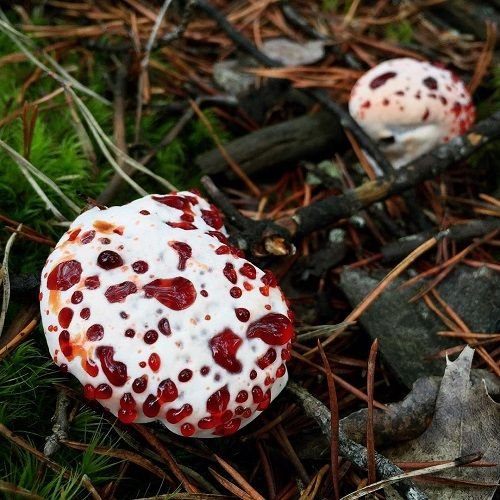%20by%20%40the_buckeye_botanist.jpg(1).jpg)
9.-Chlorociboria aeruginascens (Green Elf Cup) photo by leah_mycelia
This species contains a quinone pigment called xylindein, which is responsible for the characteristic turquoise color of wood colonized by this fungi. Although the actual cup-shaped fruit bodies are frequently not present, the staining of wood caused by the fungus is more prevalent and makes this wood very valuable for decorative woodworking uses such as Tunbridge ware.
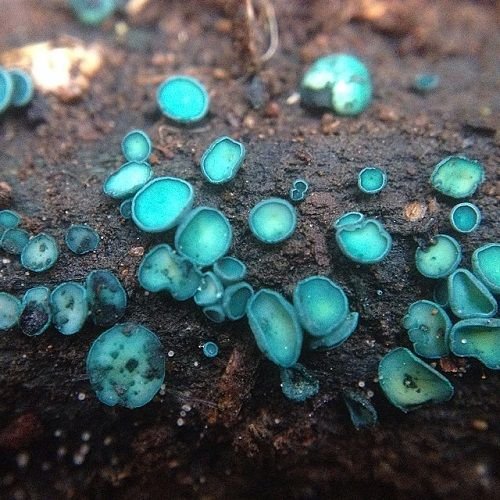%20by%20%40leah_mycelia.jpg(1).jpg)
10.-Schizophyllum commune (Split Gill Fungus) photo by Fungi
Although European and North American guidebooks list this mushroom as inedible, this fungus is in fact edible and widely consumed in Mexico, other countries in the tropics, and in India. The genus name “Schizophyllum” literally means “Split Leaves”, referring to the appearance of its gills, which can shrink in dry weather, but revive and open when they get wet to release spores in the moist environment.
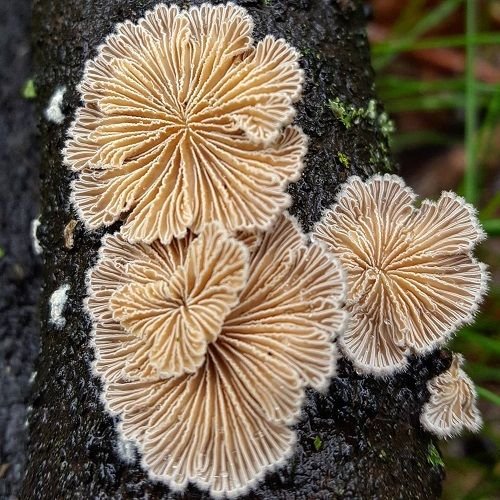.jpg)
11.-Scutellinia scutellata (Eyelash Cup Fungi) photo by ʂąཞąɧ
This species is common in North America and Europe. The fruiting bodies of this mushroom are small red cups with distinct long, dark hairs that give it the appearance of having eyelashes. The genus name Scutellinia comes from the Latin noun scutellus, meaning a small shield or bowl.
%20by%20%40bean_mama(2).jpg(1).jpg)
12.-Morchella sp. (Morel) photo by Hungry Cindy
Morchella species, the true morels (not to be confused with the false morel, Gyromitra esculenta, shown above) is a genus of choice edible mushrooms. The ecology or Morel species is not well understood yet and its cultivation has proven difficult, so commercial harvesting of wild Morels represents a multimillion-dollar business. Boyne City, Michigan, hosts the National Morel Mushroom Festival, where each year people compete to see who can collect more of these highly prized fungi in the shortest amount of time (the record is 900 morels in 90 minutes!!).
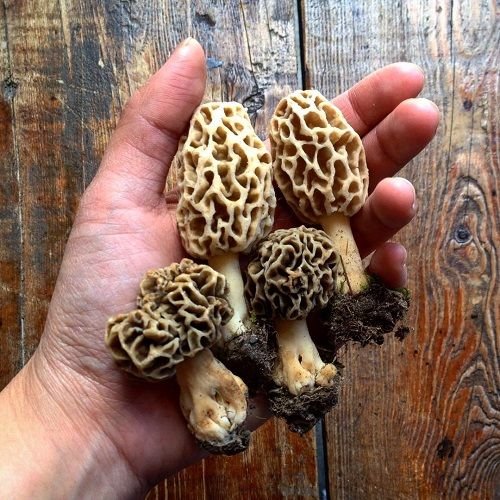.jpg)
